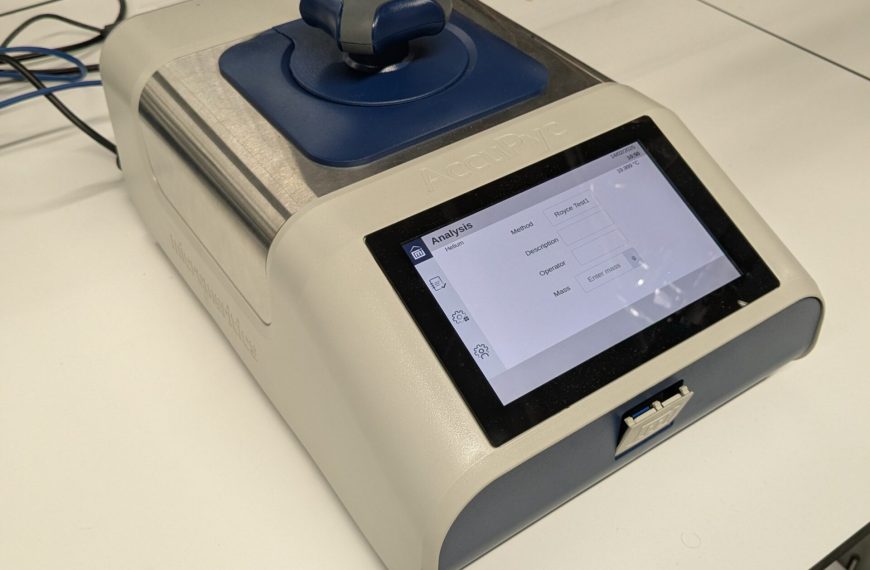Description
The AccuPyc determines density and volume by measuring the pressure change of nitrogen within a calibrated volume. This technique is non-destructive as it uses the gas displacement method to measure volume. Inert gases, such as helium or nitrogen, are used as the displacement medium. Density calculations using the gas displacement method are much more accurate and reproducible than the traditional Archimedes water displacement method.
Uses / Applications
Selected International Test Standards
ASTM B923
Metal Powders
ASTM C110
Cement
ASTM C604
Refractory Materials
ASTM C799
Nuclear Materials
ASTM D2638
Carbon
ASTM D2856
Foam
ASTM D4892
Petroleum
ASTM D5550
Soil
ASTM D5965
Coatings
ASTM D6093
Coatings
ASTM D6226
Foam
ASTM D6761
Catalysts
ASTM D70
Asphalt
ASTM D8171
Fibers
DIN 66137
Pycnometry
ISO 12154
Pycnometry
ISO 18753
Ceramics
ISO 4590
Foam
ISO 8130
Coatings
USP 699
Pharmaceuticals

Cell Volume
Nominal 10 cm3 / Available Inserts: 0.1cm3, 1cm3, 3.5cm3
Nominal 100 cm3 / Available Inserts: 10cm3, 35cm3
Specifications
Precision; Reproducibility is typically to within ± 0.01% of the nominal full-scale sample chamber volume.
Reproducibility is guaranteed to within ±0.02%
Accuracy; Accurate to within 0.03% of reading, plus 0.03% of sample capacity.



